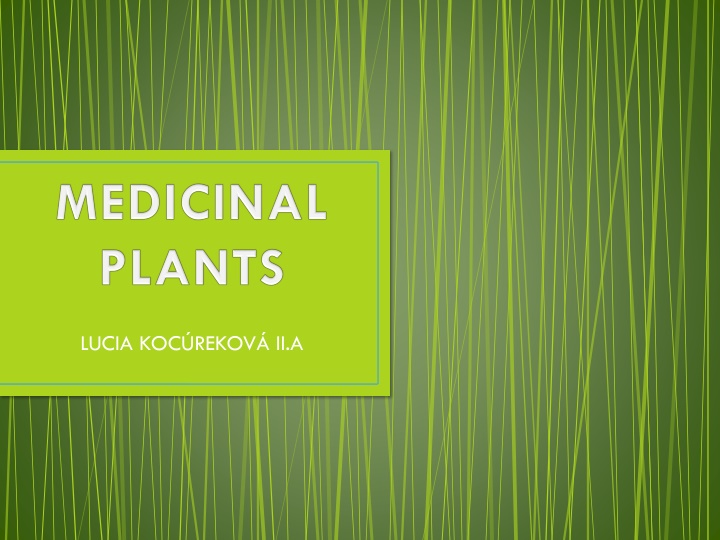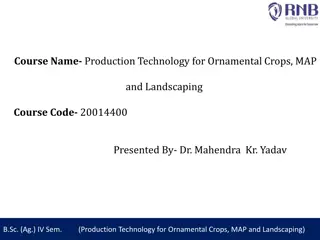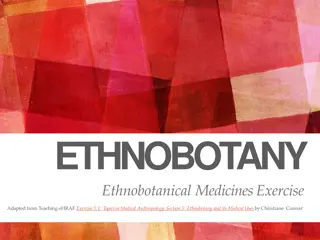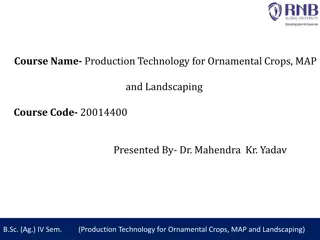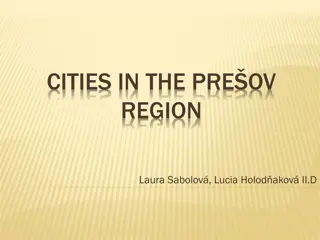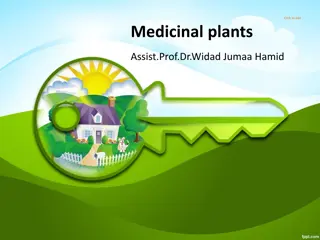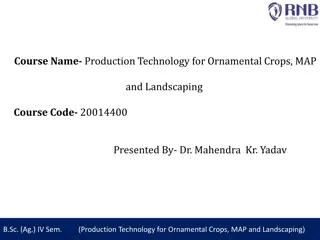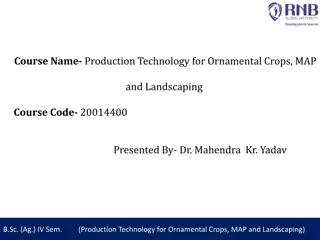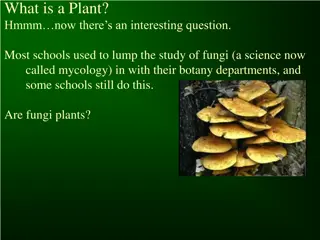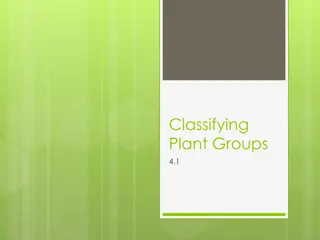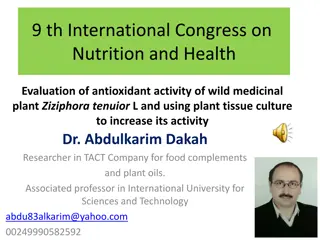Medicinal Plants in Presov Region: Tussilago and Urtica Dioica
Discover the diverse flora of the Presov region, showcasing a variety of plants like Tussilago and Urtica Dioica. Learn about their habitats, harvesting techniques, and healing effects as valuable medicinal resources in this picturesque natural setting.
Download Presentation

Please find below an Image/Link to download the presentation.
The content on the website is provided AS IS for your information and personal use only. It may not be sold, licensed, or shared on other websites without obtaining consent from the author.If you encounter any issues during the download, it is possible that the publisher has removed the file from their server.
You are allowed to download the files provided on this website for personal or commercial use, subject to the condition that they are used lawfully. All files are the property of their respective owners.
The content on the website is provided AS IS for your information and personal use only. It may not be sold, licensed, or shared on other websites without obtaining consent from the author.
E N D
Presentation Transcript
There are a lot of plants in Presov region for example: -protected -medicated -or just plain There are also many protected areas for instance: -National Nature Reserve Vihorlat -National Nature Reserve Lysa -National Nature Reserve Little Sea Eye -etc...
Tussilago DESCRIPTION OF PLANT Tussilago is perennial plant that blooms mostly as the first all of the medicinal plants Stem grows to a height of 25 cm,it is covered with pink and purple scales On top of the stem is large yellow flower The leaves are long and they grow in rosette
Habitat It grows in wet soils, from lowlands to the hills like a weed They often grow in loamy soils, waste ground, embankments and in ditches HARVEST It blooms from March to April The flowers are collected at the beginning of blooming, preferably between 14 and 16 hours The flowers are torn by hand or cut with a short stem Leaves are collected in May and June, preferably up to 9 hours in the morning Flower must not be attacked by rust or pests
HEALING EFFECTS Tussilago is very well known and currently used medicinal plant that is used internally and externally It is part of several pharmaceutical preparation of tea It is used especially in diseases of the airways,bronchi and the lungs, the digestive disorders, regulates drug metabolism, the hard healing wounds, eczema, swelling, pain rheumatic place and many others diseases
Urtica dioica DESCRIPTION OF PLANT This is very famous and extended 50 to 120 cm tall perennial herb, all covered with glandular nettle hairs The flowers are small and green HABITAT It grows like weed from the lowlands to the foothills in ditches along roads and near the rivers, especially near human settlements It likes wet soil with a high number of nitrogen
HARVEST The young leaves are picked from May to September and even several times during the year. During harvest we must use gloves
HEALING EFFECTS Its medical use offers a wide range of possibilities It also helps in disorders of the urinary tract, supports the treatment of diabetes, metabolism and the production of blood cells Aboveground parts contain large amounts of vitamin C, which helps ensure good absorption of iron from the plant into the body Therefore, a good tonic in cases of anemia In cosmetics, the powerful mash tops Stinging Nettle is used for rinsing the hair, strengthens the scalp and removes dandruff. Hair thicken, become soft, shiny and have a good process
Primrose DESCRIPTION OF PLANT Primrose is a perennial herb with a bare stem The leaves grow directly from the rhizome The plant reaches a height about 30 cm The flowers are large, yellow, arranged in umbels on top of the stem The flowers smell only slightly HABITAT It blooms from April to June Primrose grows in dry habitats, meadows, pastures, sunny hillsides, but also in sparse forests
HARVEST We pick only flower without stem during full blooming From April to May HEALING EFFECTS It helps out the coughing a mucus. The other good properties are calming effect, therefore, it is used as an ingredient in tea which ais against stress, neurosis, migraine and insomnia
Lot of plants which grow around us are medicinal plants. We should grasp it.
